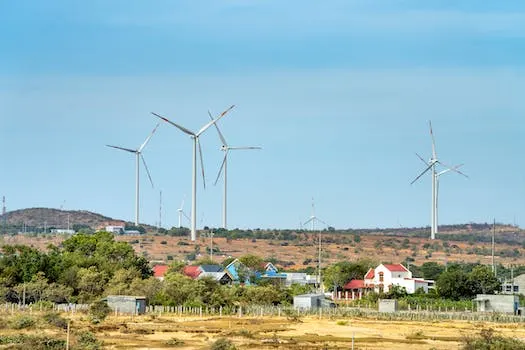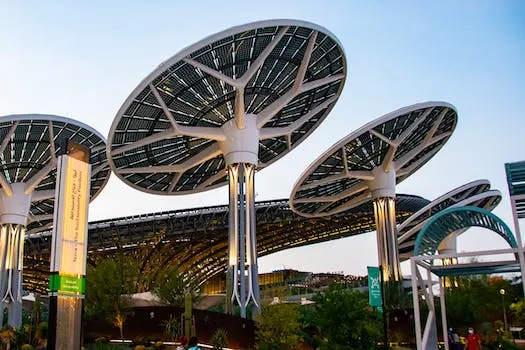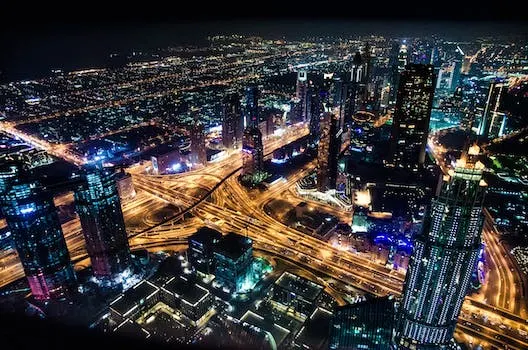
The Role of Environmental Planners in a Sustainable Future
What is an Environmental Planner?
Environmental planners are professionals who specialize in the field of environmental science, planning and policy. They use their knowledge to create plans that protect and enhance the environment. These plans involve researching and analyzing environmental data, writing reports, and developing plans that meet current environmental standards. Environmental planners may work for government agencies, non-profit organizations, or private companies.
In order to become an Environmental Planner, one must have a strong understanding of sustainability and the environment as well as possess certain skillsets. Researching careers related to this field can provide insight into salary tables, degree requirements, and additional professional resources needed for success in this role. Positions in the Land Use/Environmental Planner class series require studies on research and data analysis to develop goals and policy related to land use management.
Having a degree is important but having the right skill set is essential for success in this profession; these skills include conducting research or performing investigations for identifying sources of pollutants or hazards that affect either public health or natural resources; providing analysis on environmental concerns; property acquisition; risk assessment; project management; stakeholder engagement; public outreach initiatives; grant writing experience; GIS mapping capabilities among others. Environmental consultants also provide advice on how best to manage these issues while adhering to regulations set by local governments or other governing bodies such as state agencies or federal laws.
Environmental planners play an important role in creating sustainable futures by helping organizations understand their impact on the environment while also finding ways they can reduce it through careful planning strategies that take into account both short-term objectives as well as long-term goals when it comes to protecting our planet’s resources from further damage due human activities such as pollution emissions from factories or deforestation caused by logging operations among other things.
What Do Environmental Planners Do?
Environmental planners play a critical role in creating a sustainable future. They are responsible for assessing the environmental impacts of proposed development projects, analyzing data on environmental conditions, and creating plans that meet current environmental regulations. Environmental planners conduct field studies, review proposed development projects, and assess potential environmental impacts. They also coordinate with other agencies and stakeholders to ensure that their plans are implemented in a timely and effective manner.
The National Environmental Policy Act (NEPA) requires federal agencies to assess the environmental effects of their proposed actions prior to making decisions. This process involves compilation and analysis of a broad range of environmental, historic, archeological, cultural, and social data in order to analyze and minimize the potential impacts on the environment from construction projects or permits issued by federal agencies.
Environmental scanning is another important part of an environmental planner's job which involves systematically surveying relevant data to identify external opportunities or threats that could affect the environment or project outcomes. The US Congress has enacted or amended numerous statutes since 1969 which seek to minimise pollution levels as well as other negative impacts on the environment through various regulations such as air quality standards or water quality standards for example.
Environmental planners must be knowledgeable about these laws so they can create plans that comply with them while still achieving desired outcomes for their clients or employers. They must also be able to communicate effectively with stakeholders involved in any given project so they can ensure everyone is aware of any potential risks associated with it before it begins implementation. By doing this work diligently they help create a more sustainable future for all involved parties while protecting our natural resources at the same time!
How Do Environmental Planners Contribute to a Sustainable Future?
Environmental planners are essential to creating a sustainable future. They are responsible for understanding the latest regulations and developing plans to reduce our environmental impact. By analyzing data and providing insight into potential environmental impacts, they can help inform decision makers and provide guidance on how to reduce our environmental footprint. Additionally, they can develop strategies to support renewable energy sources, reduce waste, and conserve natural resources. This effort is necessary in order to tackle the environmental, economic and social impact of climate change which requires a huge transformation across all sectors as highlighted in this year's Environmental Progress Report. Furthermore, The Future is Now: Science for Achieving Sustainable development report provides an overview of how countries can create opportunities for a green and inclusive economic recovery from the COVID-19 pandemic while Policy Brief focuses on how countries can create opportunities for a green and inclusive economic recovery from the COVID-19 pandemic with sustainable development pathways supported by effective regulation of land use to reduce environmental trade-offs as well as reduced reliance on fossil fuels.
The Benefits of Environmental Planning
Environmental planning is an important tool for creating sustainable communities and protecting the environment. It can help protect existing resources, reduce pollution and waste, conserve natural habitats, and raise awareness of environmental issues in the community. By understanding the latest regulations and developing plans that meet current standards, environmental planners can ensure that development projects are completed in a sustainable manner.
Grassed tram track in Belgrade is one example of how environmental planning can benefit communities by providing improved transportation options while also preserving undeveloped land. Protecting existing forest and tree cover as well as planting new forests when there are losses helps maintain water and air quality, provides habitat for wildlife, reduces carbon dioxide levels, and can reduce flood risk. Additionally, potential benefits of environmental planning include improved environmental performance; enhanced compliance; pollution prevention; resource conservation; new customers/markets; increased public support for sustainable initiatives; reduced flooding risks to communities; and more efficient transportation options.
The government must bear responsibility for establishing regulatory conditions that will ensure effective implementation of these plans by planners. The structure of these programs should be open to scrutiny to ensure they are meeting their goals effectively while also taking into account the needs of local communities. Environmental enthusiasm among planners is essential to protect the natural environment from further damage due to human activities such as deforestation or over-development projects without proper consideration for their impact on nature or local populations.
Environmental planning has many benefits both for people living in affected areas as well as nature itself if done correctly with consideration given to all stakeholders involved in a project’s development process from start to finish. By understanding current regulations related to sustainability initiatives while also taking into account public opinion on such matters through increased awareness campaigns about environmental issues within affected areas – planners have an important role in helping create a more sustainable future through their work today!
Conclusion
In conclusion, environmental planners are essential to creating a sustainable future. By understanding the latest regulations and developing plans that protect and enhance the environment, they can help reduce our environmental footprint. Cost-effective technologies will emerge when management systems identify, prioritize, and evaluate environmental opportunities. Furthermore, sustainable development and climate action are linked – both of which are necessary for present and future well-being of humanity. To achieve this goal, green action plans must be implemented across all policy areas with an emphasis on transitioning to more inclusive societies with net-zero GHG emissions and reduced impacts exacerbated by inequality and unsustainable economic development. Citi remains committed to reducing its own environmental footprint in order to contribute towards this goal. Ultimately, it is through the efforts of environmental planners that we can create a sustainable future for generations to come.










